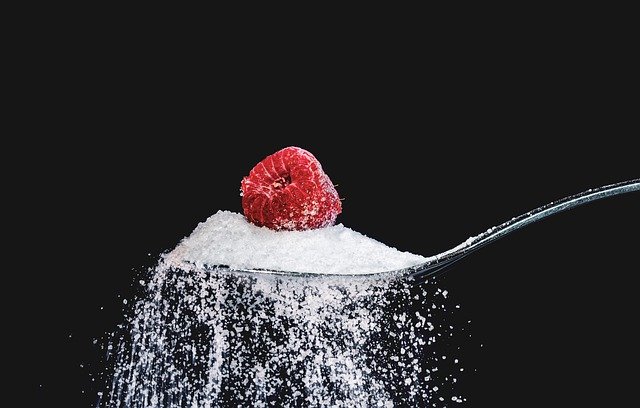The Sweet Health Risks of Added Sugars

If you’ve taken a minute to look at food labels recently, you should have noticed a relatively new addition called “added sugars.” The next obvious question is, what are added sugars? Sugars can be broken into two categories. The first is naturally occurring sugars such as those found in fruit, like fructose and glucose or in milk, known as lactose. The other category is what we now call added sugars. These are chemical or natural sugars (or syrups) “added” to foods during production, processing and/or at the table…like when you “add” sugar to a cup of coffee.
When you look at a nutrition label, you’ll notice two lines that deal with sugars. The first is “total sugars,” which gives you the total grams of sugar contained within the product (for the curious out there, a gram of sugar is equal to about a ¼ teaspoon). If sugar has been added to the product, right below total sugars you’ll see “includes __g added sugars.” For example, on a jar of Welch’s natural strawberry spread (which I grabbed from my pantry) you’ll find “total sugars 11g” and “incl. 10g added sugars.” In other words, Welch’s added 10 grams of sugar to a product that would have otherwise only had 1 gram of sugar per tablespoon.
It’s recommended that adult males consume no more than 36 grams (9 teaspoons) of sugar per day while adult women should consume no more than 25 grams (6 teaspoons). However, the average American adult consumes 70-75 grams of sugar every day. The primary source of added sugars for most adults are beverages (soda, juices, sports drinks and coffee/tea) which make up 47% of added sugars consumed. A single 12 ounce can of Pepsi contains 41 grams of sugar, all of them added. With that single can of Pepsi, you’ve just exceeded your recommended sugar intake for the day.
Next question: Why do manufacturers add sugars to certain products? Well, the same reason some of us add sugar to plain oatmeal, to improve the taste. Is adding sugar necessary? No, but if it improves the taste, we’re more likely to eat it again. Remember, before we eat it again, we must purchase it again, which puts more money in the pockets of said manufacturers. Bottom line? Food manufacturers know we’re hard wired to crave and, some say, become addicted to sugar. Since that’s the case, adding sugar to their products adds profits to their bottom lines.
Recent research has found that 75% of packaged food contains added sugars. Yes, you would expect processed sweets, like cookies, cakes, ice cream and cereals to contain added sugars. However, added sugars also show up in foods you wouldn’t expect, like bread, soups, ketchup, yogurt, salad dressings, pasta sauce, granola bars, barbecue sauce, peanut butter and baked beans. There’s only one way to determine if a processed/packaged food contains added sugars…read the nutrition label.
If you consume as much sugar as the average American, it can pose a very real and dangerous threat to your overall health. And remember, sugar, aside from calories, has no nutritional value; none. Sugars are referred to as “empty calories” because they contain no essential vitamins or minerals whatsoever. Consuming too many of these empty calories can lead to obesity, cardiovascular disease, high blood pressure, increased risk of certain cancers, type 2 diabetes, increased levels of LDL (bad) cholesterol, liver disease and tooth decay.
The first step to avoiding these health risks is awareness. Be aware of what you’re eating and whether or not what you’re eating contains added sugars. If you can simply remember that most health professionals recommend no more than 36 grams of sugar/day for men and 25 grams for women, that’s half the battle. Then you can simply do the math as you go through your day. And if you truly seek to cut back your sugar intake, look at what you drink first and then start to track the amount of processed food contained within your diet.
You must be logged in to post a comment.